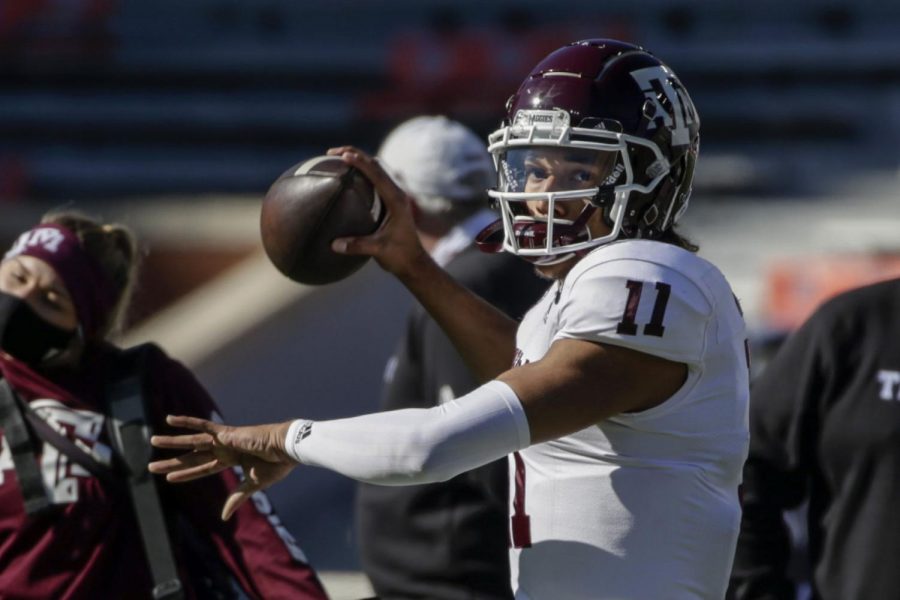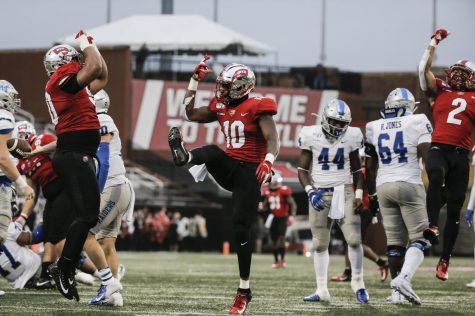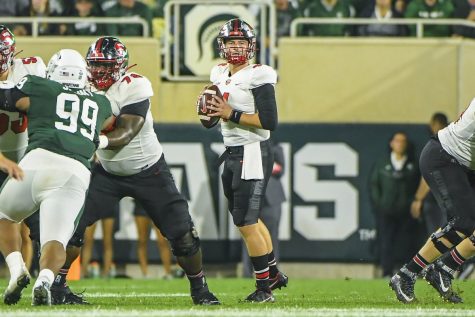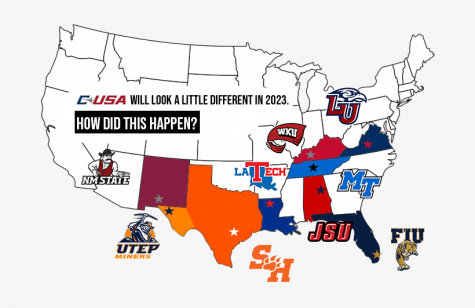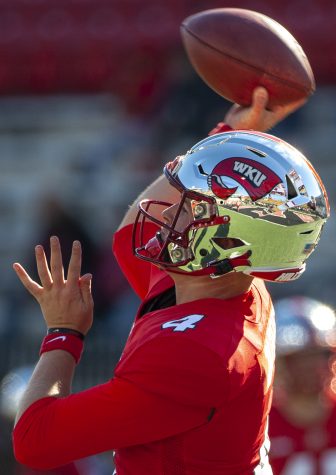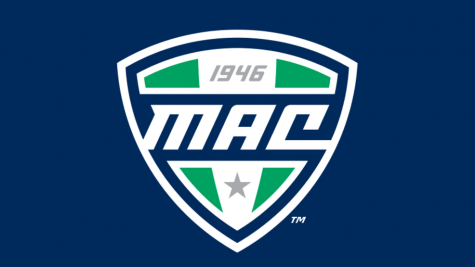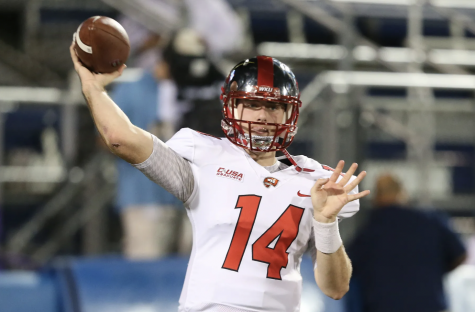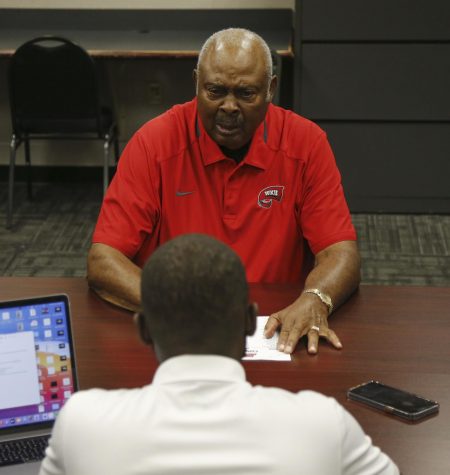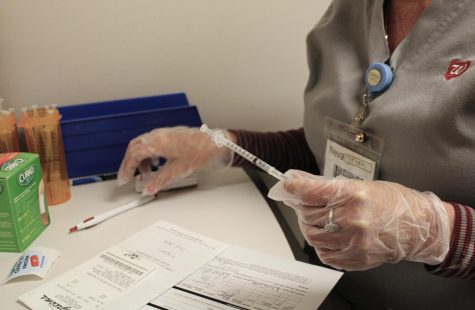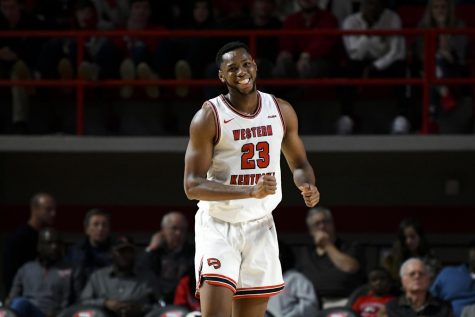After last year’s ‘Love’ story, could Packers take a late-round flyer on another young QB?
April 19, 2021
GREEN BAY — Ever since he traded up in the first round of last year’s NFL draft to take Utah State quarterback Jordan Love — thereby starting the countdown clock to the end of three-time NFL MVP Aaron Rodgers’ time with the Green Bay Packers — general manager Brian Gutekunst has repeatedly likened the pick to the developmental selections the team made at the position in past years.
He did so again earlier this offseason, a week after his team’s NFC Championship Game loss to the eventual Super Bowl LV-champion Tampa Bay Buccaneers at Lambeau Field.
“When you go through my history here with the Green Bay Packers, whether it was Matt Hasselbeck (in 1998) or Aaron Brooks (in 1999), (look at) the way we developed those guys,” Gutekunst said then. “We believe in that. This probably won’t be the first time we draft a quarterback and try to develop him because we just think it’s such an important part of the game.”
But truth be told, such comparisons are hardly apt. And Gutekunst, who is entering his fourth draft as general manager after starting his Packers scouting career in 1998 under Pro Football Hall of Fame GM Ron Wolf, surely knows that.
After acquiring Brett Favre from the Atlanta Falcons in a franchise-transforming February 1992 trade in exchange for one of his first-round draft picks that year, Wolf picked seven quarterbacks in the nine drafts he ran in Green Bay — but none of them were taken earlier than the fourth round. Hasselbeck was a sixth-round pick from Boston College (No. 187 overall) in 1998; Brooks was the highest quarterback drafted by Wolf, in the fourth round (No. 131) in 1999.
That’s hardly an apples-to-apples comparison to Love, whom Gutekunst picked at No. 26 overall — and he gave up a fourth-round pick in a trade to go up and get.
The other GM who influenced Gutekunst the most, the late Ted Thompson, got his gold-jacket quarterback in Rodgers during the 2005 NFL draft, when the ex-California star went from possibly being the No. 1 overall pick to falling into the Packers’ lap at No. 24 overall in Thompson’s first draft in charge.
In Thompson’s subsequent 12 drafts as GM, the Packers took only five quarterbacks — with two of them coming in the 2008 draft, as Rodgers was taking over for Favre as the team’s starter: Second-round pick Brian Brohm, and seventh-round pick Matt Flynn. Flynn beat Brohm out that summer for the right to back up Rodgers, and Brohm’s NFL career flamed out quickly, after just three regular-season appearances, all with the Buffalo Bills.
The next-highest pick Thompson used on a quarterback was a 2015 fifth-round pick on UCLA’s Brett Hundley.
Gutekunst’s decision to draft Love — a year after he seriously considered picking Missouri quarterback Drew Lock, who went 44th overall in 2019 NFL Draft to the Denver Broncos — set off a chain reaction that has led to an offseason of discontent for Rodgers, who according to multiple sources had sought a restructured contract that would have given him security with the team beyond a lame-duck 2021 season. Rodgers’ current contract runs through 2023, but the Packers can move on from him after this coming season and clear more than $22 million in 2022 salary-cap space.
And, with Love serving as the team’s inactive third quarterback behind Rodgers and primary backup Tim Boyle for all 18 games (including playoffs), the Packers predictably chose not to make a qualifying restricted free-agent offer to Boyle, who left for the Detroit Lions so Love could move up the depth chart to the No. 2 spot behind Rodgers.
Even if Rodgers’ unhappiness doesn’t lead to any drama leading into the season — talk of any hard feelings he has toward the organization faded while Rodgers’ guest-hosting run on the game show “Jeopardy!” aired over the past two weeks — the Packers surely won’t enter training camp in late July with just Love and Rodgers on the roster.
So, with 10 picks in the April 29-May 1 draft, Gutekunst could take another quarterback, perhaps on Day 3 — when Wolf and Thompson usually picked their developmental signal-callers.
“I think you can understand the importance of developing quarterbacks. We’re going to put a lot of stock into that,” Gutekunst said. “We’re going to use resources to acquire and develop quarterbacks just because it’s what we believe in.”
Packers depth chart
12 Aaron Rodgers 6-2 225 37 17 California
10 Jordan Love 6-4 219 22 2 Utah State
Best in class
Trevor Lawrence, Clemson
The 6-foot-5, 213-pound Lawrence led the Tigers to the 2018 national title as a true freshman, and Clemson went 34-2 in Lawrence’s 36 starts over three seasons. While collegiate success obviously has never guaranteed NFL greatness, the presumptive No. 1 overall pick is something the lowly Jacksonville Jaguars haven’t had enough of during their 27-year existence: A winner.
That’s what new Jaguars coach Urban Meyer, who was hired on Jan. 14 and attended Lawrence’s February 12 pro day workout with Jaguars offensive coordinator Darrell Bevell and passing-game coordinator Brian Schottenheimer, sees in Lawrence, and it’s why Lawrence’s Feb. 16 left (throwing) shoulder surgery doesn’t seem to have deterred Jacksonville at all.
“This will be the biggest decision (the Jaguars) have made, certainly in the recent history of the (organization),” Meyer said last week during an appearance on NFL Network personality Michael Irvin’s podcast. “This will set the path. … We cannot miss on this. We can’t miss.”
Next men up
Zach Wilson, BYU; Justin Fields, Ohio State; Trey Lance, North Dakota State; Mac Jones, Alabama; Davis Mills, Stanford.
Pick to click
Kellen Mond, Texas A&M
If the Packers do want to add another developmental quarterback to the mix — as opposed to bringing in an undrafted free agent to serve as a camp arm, or picking up an inexpensive journeyman who could serve as the primary backup if Love flops in preseason — Mond is an intriguing Day 3 option. A four-year starter for the Aggies, the strong-armed Mond left A&M as the school’s all-time leader in passing yards (9,661), completions (801), attempts (1,358), touchdown passes (71) and quarterback starts (44). He is a terrific athlete, but his inconsistent accuracy is a concern — and is among the reasons why he isn’t being talked about the way the potential five first-round quarterbacks are.
“I don’t mind being underrated because the chips are going to fall where they may,” said Mond, who led the Aggies to a 9-1 record and an Orange Bowl victory last season. “I try to be even-keeled and everything will happen at the best time for me.”
History lesson
While Wolf made his Pro Football Hall of Fame bones by trading for an out-of-shape third-string quarterback (Favre, who infamously missed the Atlanta Falcons’ team picture as a rookie because of a hangover), Wolf certainly had a keen eye for quarterbacking talent in the draft — even though he never selected one higher than the fourth round.
Of the seven QBs Wolf drafted in his nine years in charge, three stand out: Washington’s Mark Brunell (fifth round, 1993), Hasselbeck (sixth round, 1998) and Brooks (fourth round, 1999) — all of whom the Packers flipped for extra draft picks after they served as backups behind Favre.
Thompson, the Packers’ other post-Lombardi, Super Bowl-winning GM, took a quarterback with his very first pick (Rodgers), then picked only five more quarterbacks in his next 12 drafts: Furman’s Ingle Martin (fifth round, 2006); Brohm (second round, 2008); Flynn (seventh round, 2008); Tennessee-Chattanooga’s B.J. Coleman (seventh round, 2012) and Hundley (fifth round, 2015).
Before Thompson picked Rodgers in 2005 — and before Gutekunst picked Love last year, 15 years to the day after Thompson chose Rodgers — the Packers had drafted a quarterback in the first round only two other times since the 1970 AFL-NFL merger: Nebraska’s Jerry Tagge in 1972, and California’s Rich Campbell in 1981.

